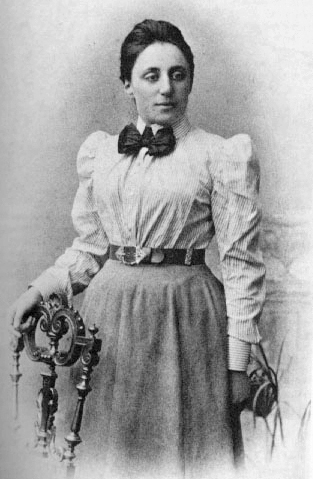John C. Baez's Blog, page 86
May 16, 2014
West Antarctic Ice Sheet News
You may have heard the news: two teams of scientists claiming that the West Antarctic Ice Sheet has been irreversibly destablized, leading to a slow-motion process that in some number of centuries will cause 3 meters of sea level rise.
“Today we present observational evidence that a large section of the West Antarctic Ice Sheet has gone into irreversible retreat,” an author of one of the papers, Eric Rignot, a glaciologist at NASA’s Jet Propulsion Laboratory, said at a news conference recentl...
May 14, 2014
Hexagonal Hyperbolic Honeycombs
This post is just for fun.
Roice Nelson likes geometry, and he makes plastic models of interesting objects using a 3d printer. He recently created some great pictures of ‘hexagonal hyperbolic honeycombs’. With his permission, I wrote about them on my blog Visual Insight. Here I’ve combined those posts into a single more polished article.
But the pictures are the star of the show. They deserve to be bigger than the 450-pixel width of this blog, so please click on them and see the full-sized ve...
May 9, 2014
The Stochastic Resonance Program (Part 1)
guest post by David Tanzer
At the Azimuth Code Project, we are aiming to produce educational software that is relevant to the Earth sciences and the study of climate. Our present software takes the form of interactive web pages, which allow you to experiment with the parameters of models and view their outputs. But to fully understand the meaning of a program, we need to know about the concepts and theories that inform it. So we will be writing articles to explain both the programs themselves...
May 6, 2014
Quantum Frontiers in Network Science
guest post by Jacob Biamonte
There’s going to be a workshop on quantum network theory in Berkeley this June. The event is being organized by some of my collaborators and will be a satellite of the biggest annual network science conference, NetSci.
A theme of the Network Theory series here on Azimuth has been to merge ideas appearing in quantum theory with other disciplines. Remember the first post by John which outlined the goal of a general theory of networks? Well, everyone’s been chipping a...
May 3, 2014
Noether’s Theorem: Quantum vs Stochastic
guest post by Ville Bergholm
In 1915 Emmy Noether discovered an important connection between the symmetries of a system and its conserved quantities. Her result has become a staple of modern physics and is known as Noether’s theorem.

The theorem and its generalizations have found particularly wide use in quantum theory. Those of you following the Network Theory series here on Azimuth might recall Part 11 where John Baez and Brendan Fong proved a version of Noether’s theorem for stochastic syst...
April 22, 2014
New IPCC Report (Part 8)
guest post by Steve Easterbrook
(8) To stay below 2°C of warming, most fossil fuels must stay buried in the ground
Perhaps the most profound advance since the previous IPCC report is a characterization of our global carbon budget. This is based on a finding that has emerged strongly from a number of studies in the last few years: the expected temperature change has a simple linear relationship with cumulative CO2 emissions since the beginning of the industrial era:

(Figure SPM.10) Global mean s...
April 18, 2014
New IPCC Report (Part 7)
guest post by Steve Easterbrook
(7) To stay below 2 °C of warming, the world must become carbon negative
Only one of the four future scenarios (RCP2.6) shows us staying below the UN’s commitment to no more than 2 ºC of warming. In RCP2.6, emissions peak soon (within the next decade or so), and then drop fast, under a stronger emissions reduction policy than anyone has ever proposed in international negotiations to date. For example, the post-Kyoto negotiations have looked at targets in the regi...
What Does the New IPCC Report Say About Climate Change? (Part 7)
guest post by Steve Easterbrook
(7) To stay below 2 °C of warming, the world must become carbon negative.
Only one of the four future scenarios (RCP2.6) shows us staying below the UN’s commitment to no more than 2 ºC of warming. In RCP2.6, emissions peak soon (within the next decade or so), and then drop fast, under a stronger emissions reduction policy than anyone has ever proposed in international negotiations to date. For example, the post-Kyoto negotiations have looked at targets in the reg...
April 16, 2014
New IPCC Report (Part 6)
guest post by Steve Easterbrook
(6) We have to choose which future we want very soon.
In the previous IPCC reports, projections of future climate change were based on a set of scenarios that mapped out different ways in which human society might develop over the rest of this century, taking account of likely changes in population, economic development and technological innovation. However, none of the old scenarios took into account the impact of strong global efforts at climate mitigation. In...
What Does the New IPCC Report Say About Climate Change? (Part 6)
guest post by Steve Easterbrook
(6) We have to choose which future we want very soon.
In the previous IPCC reports, projections of future climate change were based on a set of scenarios that mapped out different ways in which human society might develop over the rest of this century, taking account of likely changes in population, economic development and technological innovation. However, none of the old scenarios took into account the impact of strong global efforts at climate mitigation. In...
John C. Baez's Blog
- John C. Baez's profile
- 29 followers



